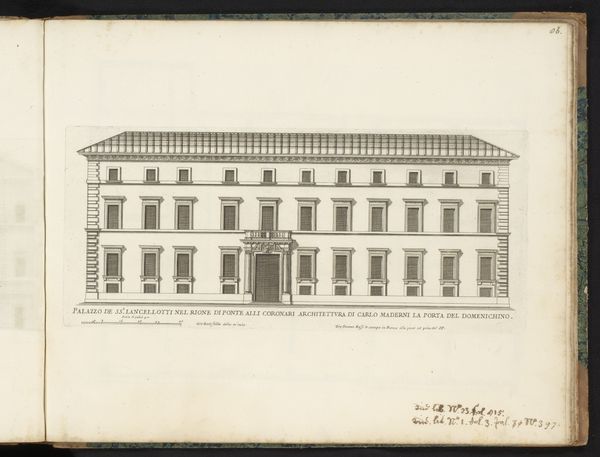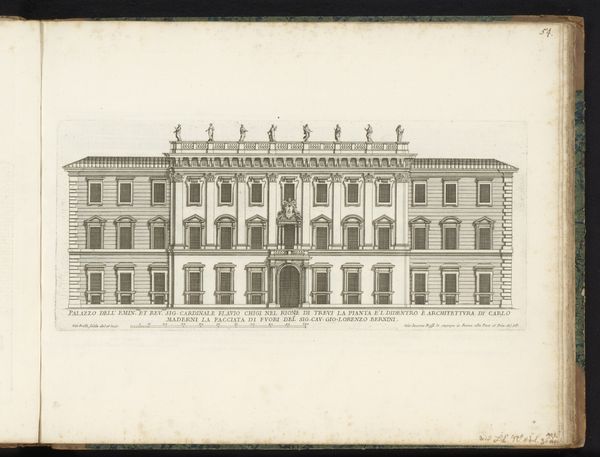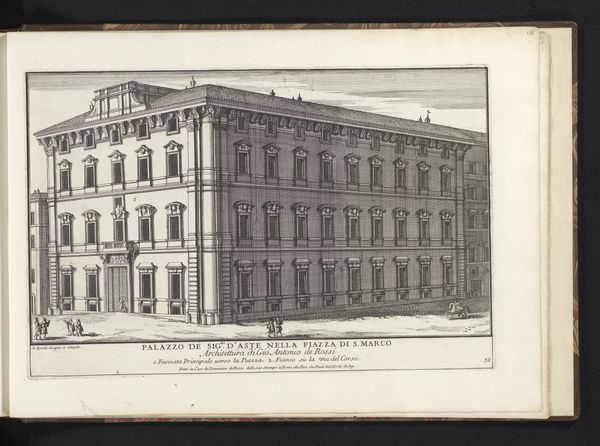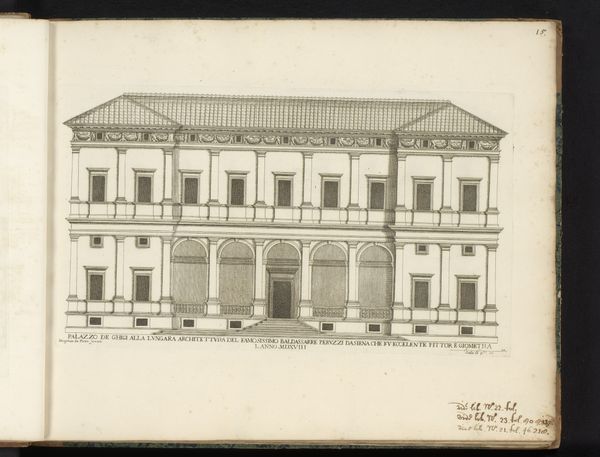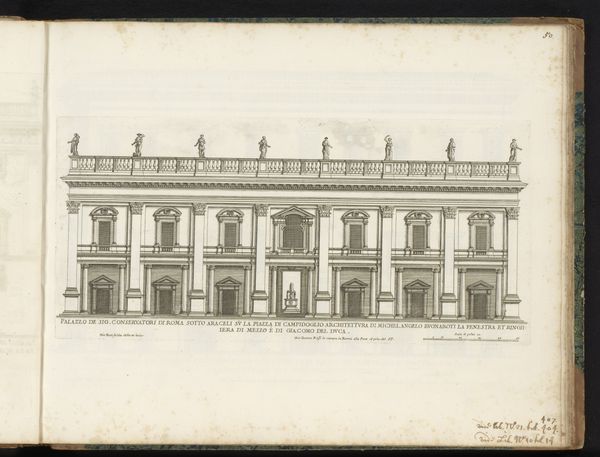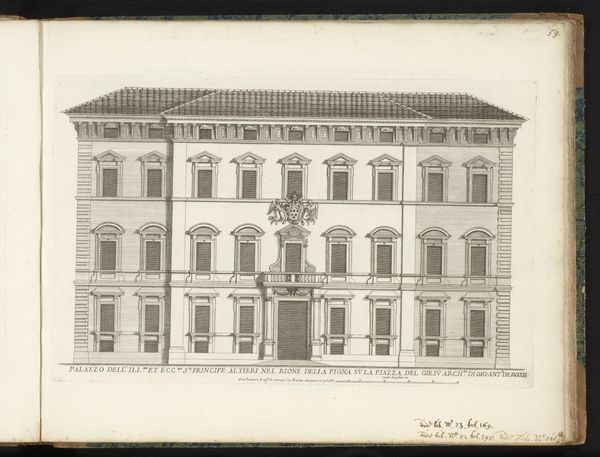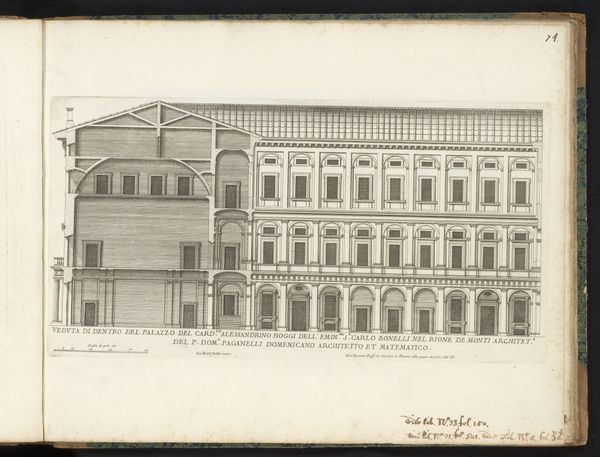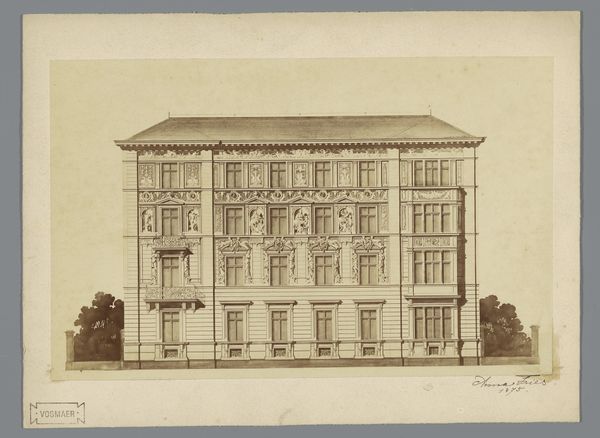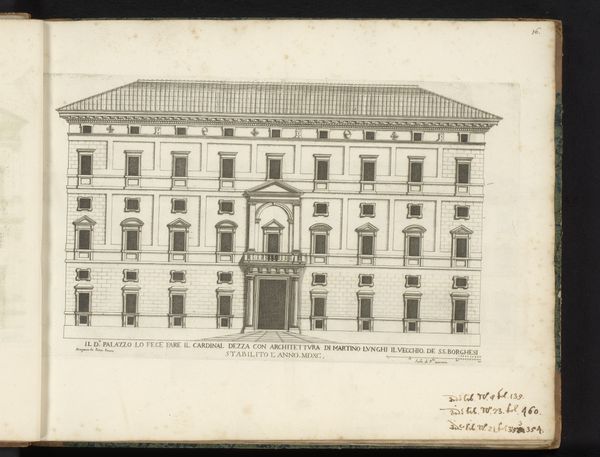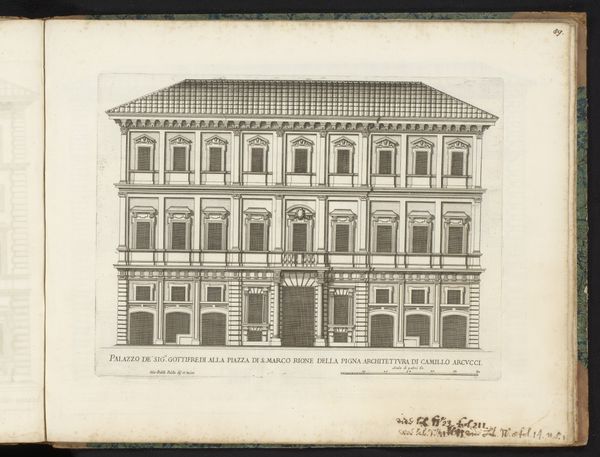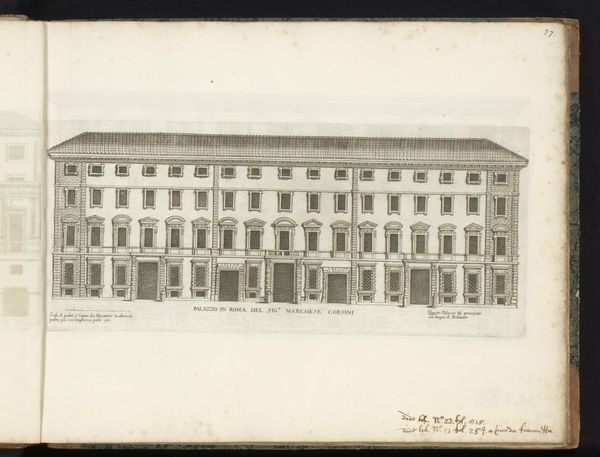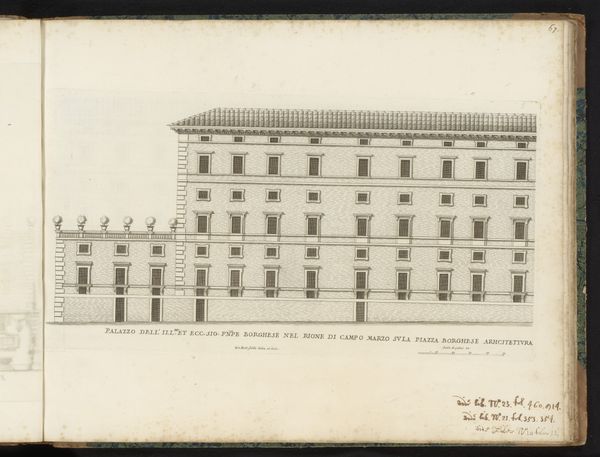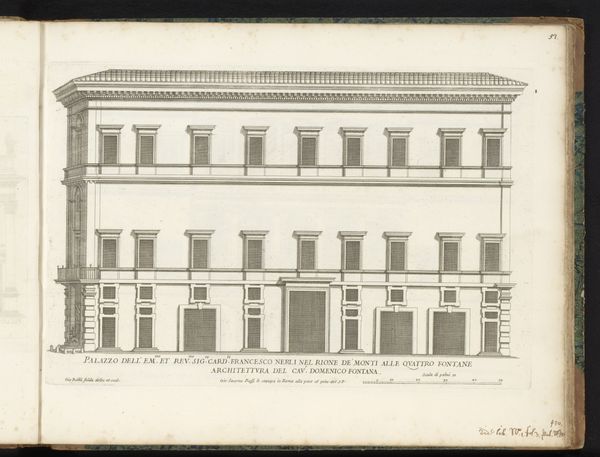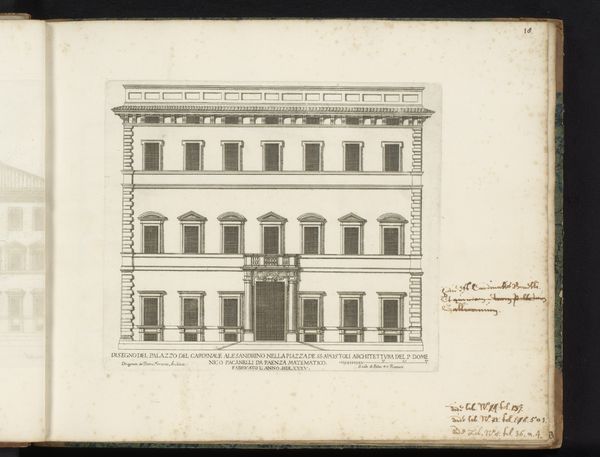
drawing, paper, ink, architecture
#
drawing
#
baroque
#
paper
#
ink
#
geometric
#
cityscape
#
architecture
#
building
Dimensions: height 261 mm, width 419 mm
Copyright: Rijks Museum: Open Domain
Editor: So, we're looking at "Façade van Palazzo Falconieri," a drawing made after 1655 by Giovanni Battista Falda, rendered in ink on paper. I’m struck by how precise it is; it almost feels like a technical blueprint rather than a traditional drawing. What can you tell me about it? Curator: I see this drawing as a fascinating document of both artistic skill and the social conditions of its making. Think about the paper itself – its sourcing, production, the labor involved in its creation. The ink too: its chemical makeup, the skill required to produce and use it consistently. Editor: Right, it's not just about the final image. Curator: Exactly. This image serves to convey more than aesthetics. It illustrates the systems of power and wealth present at the time of production. It represents the architect's, and therefore patron's, aspirations in terms of material display and production capabilities. Falda documents that in exquisite detail. Editor: It's like he's showing us not just the building, but also a kind of record of the Baroque obsession with detail. The craftsmanship involved in *creating* this drawing also mimics the craftsmanship celebrated in the architecture itself. Curator: Precisely! How do the geometric elements strike you? Are they truly objective or do they indicate further socioeconomic contexts? Editor: Well, the geometry communicates order and control – concepts highly valued by the ruling class. The cityscape depicted symbolizes power through impressive architecture. Falda meticulously details that very tangible manifestation of that order for those who couldn't experience it in person, yet aspire to it. Curator: Yes, we are left with so much to consider in the drawing’s method of creation, how it circulated, and what meaning it possessed during this time. Thanks to this conversation, I’m more aware of that relationship between object and artistic practice, rather than focusing solely on its historical context. Editor: Absolutely. I now have a far greater understanding of how process and materials affect not only artmaking, but also the overall cultural narrative.
Comments
No comments
Be the first to comment and join the conversation on the ultimate creative platform.
